What Do All Those Rolex Terms ACTUALLY Mean? | The Classroom S02: Episode 2
** Jag kan faktiskt bli irriterad över att folk fortfarande tror att ”Tuborg” är en Jubileumsklocka för Turborg.
** Bra video för de som inte är helt insatta.
Han missar mycket, han kunde gärna ha förklarat de olika låsen osv.
Men det är fortfarande en bra video.
Några termer han kunde tagit upp är
TWINLOCK
TRIPLOCK
PARAFLEX
PARACHROM
OYSTERFLEX
GLIDELOCK
CROWNCLASP
OYSTERLOCK
OYSTERCLASP
Men jag kanske kan göra det istället.
** Rolex har en hel del olika lås på sina olika metall-länkar
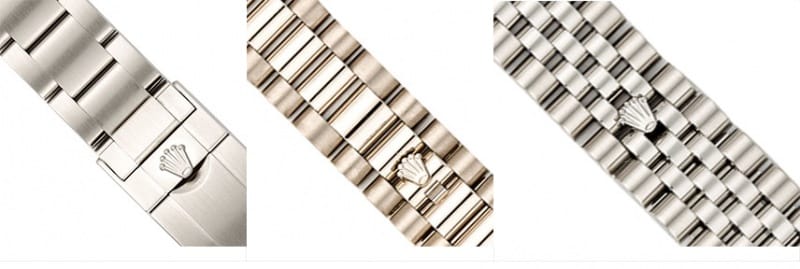
** De olika länkarna/armbanden/remmarna är
Oyster
Detta är den vanligaste modellen.
Det är den mest använda, den mest igenkända och den mest kopierade länken.
Den består av 3 rätt platta bitar.
Denna länken ser du på de mest populära Rolex modellerna, ända sen den presenterades i slutet av 30-talet, ja sportmodellerna om du vill kalla det så, t.e.x Submariner, Daytona, Sky-Dweller osv osv.



President
Detta är en speciell länk, det är en länk som alla känner igen, men du ser den bara på President-modellen. (Och vissa dam Datejust)
Denna 3-delade länk har suttit på Oyster Perpetual Day-Date sedan 1956, och finns bara i ädelmetaller, Guld, Everose, Vit Guld och Platina.


Jubilee
Min favorit, den stiligaste modellen enligt mig.
Denna 5 delade länk kom 1945 på Oyster Perpetual Datejust, och sedan dess så är detta en ”Datejust” länk enligt mig, även om du kan få Datejust med Oyster länk idag också.
Jubilee länken är snyggast som Two-Tone / / Guld/Stål



Pearlmaster
Detta är en relativt ny och ännu väldigt ovanlig länk.
Den kom 1992 och ses främst som en länk till dam-klockor även om den absolut även finns till herrmodeller.
Den består av 5 väldigt finpolerade bitar.
Oftast så ser du den fullsatt med diamanter 😉


Läder
Ja vad finns det att säga..
Det är inte alls så vanligt numera.
Och Rolex själva har faktiskt erbjudit dem i en massa fräcka färger.
Iallafall till Day-Date 36


Oysterflex/Gummi
Du har säkert sett en massa bära olika Rolex modeller med gummirem sen way back.
Men denna gummirem är faktiskt den senaste ”rem-nyheten” från Rolex.
Den kom 2015 till deras lite mindre (37 mm tyvärr) Yacht-Master.
Idag kan du få gummirem till Yacht-Master 40 och Daytona också.
Men det är bara de 3 modellerna än så länge.


Så det är inte så många att hålla koll på

** Det är rätt lätt att lära sig Rolex olika referensnummer.
Och när det kommer till material, så är det den sista siffran i ref.nr som säger vad det är för material på klockan.
0 = Stainless Steel
1 = Yellow Gold Filled
2 = White Gold Filled or Stainless Steel & Platinum
3 = Stainless Steel & Yellow Gold
4 = Stainless Steel & White Gold
5 = Gold Shell or 18k Pink Gold or Rose Gold
6 = Platinum
7 = 14k Yellow Gold
8 = 18k Yellow Gold
9 = 18k White Gold
** Twinlock / Triplock
Detta är kortfattat olika tätningar till kronan.
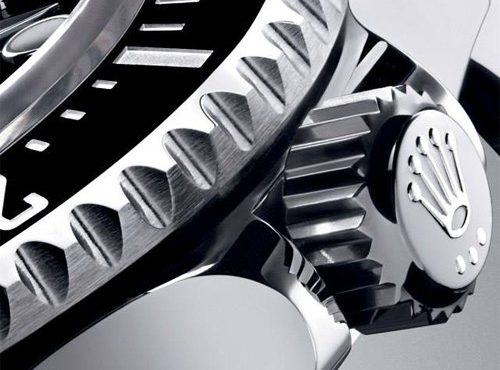
Twinlock används till de som klarar 100 meters/300 feet dyk under vattenytan.
Triplock är för dykarklockorna som klarar 300 meter/1000 feet, eller mer.
Du ser på kronan vad du har för något på din klocka genom att tolka punkterna under loggan.
line = steel or yellow gold twinlock
two dots = white gold twinlock
one dot = platinum twinlock
three small dots = steel or yellow gold triplock
small.large.small dots = white gold triplock
large.small.large dots = platinum triplock

Den lilla kronan som du ställer klockan med består av 10 delar.


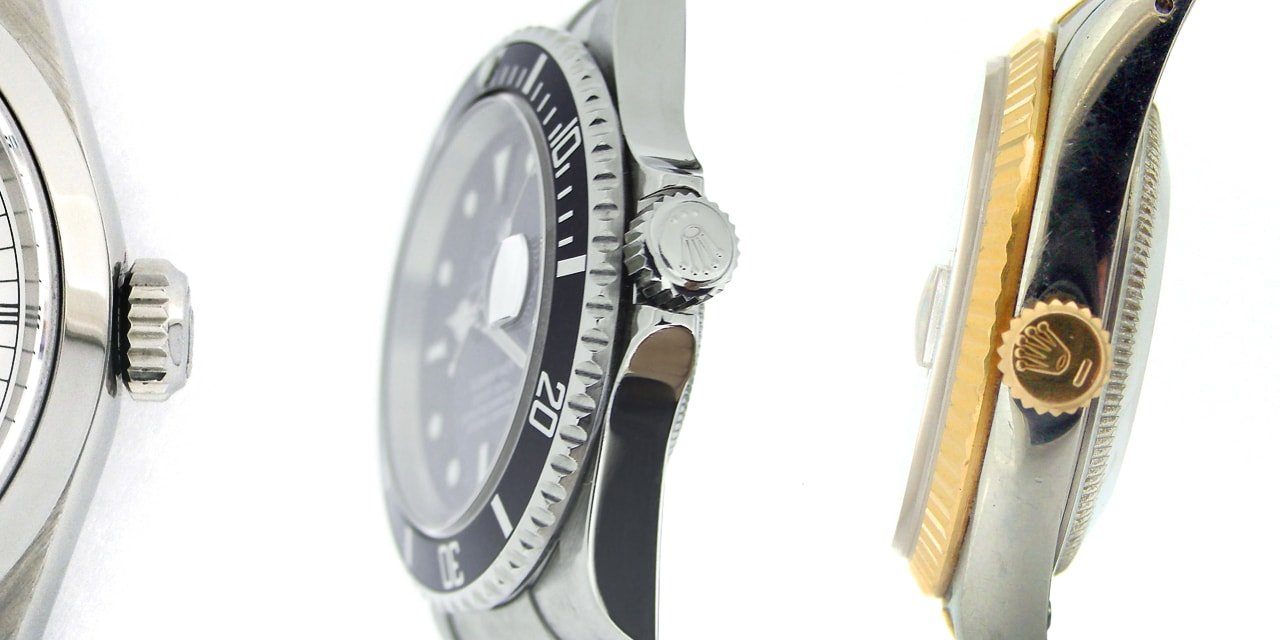
Och det är tack vare den vattentäta kronan/kronskyddet som Rolex lyckades vara väldigt tidiga med vattentäta vardagsklockor.
Du ser på klockan om det är en dykarklocka eller inte rätt enkelt tycker jag.
Sen är kronan rätt så mycket större på en dykarklocka med.
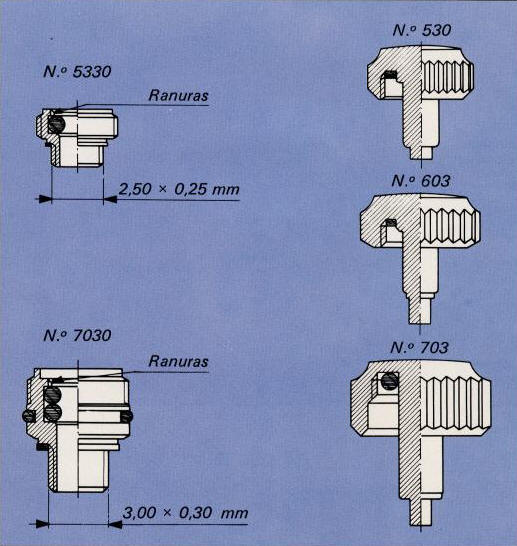
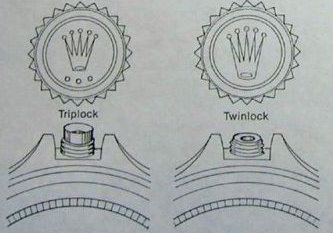
** PARAFLEX
Paraflex är inte bara muskelavslappnande medicin, utan det är Rolex namn på deras ”Shock Absorber”
Visa detta inlägg på Instagram
To increase the resistance of its movements to shocks – especially if the watch is dropped – Rolex developed Paraflex, a highly efficient shock absorber designed to protect sensitive components of the movement, notably the staff of the balance wheel. Paraflex shock absorbers increase shock resistance by up to 50 per cent.

** PARACHROM
Eller Parachrom Hairspring.
Det är deras fjäder mekanism.


** GLIDELOCK
Glidelock är något som Rolex borde ha på alla sina modeller tycker jag.
Glidelock innebär att du jätteenkelt kan justera längden på din länk.
Vilket är helt underbart att ha när handlederna har lätt för att svälla på sommaren osv.
Så nej det är inte den extra -länken du viker ut när du ska trä klockan över din dykardräkt, utan mer precist än så.
Även om det är till för samma syfte.
Men när du har en ett Glidelock lås oftast så har du båda varianterna.
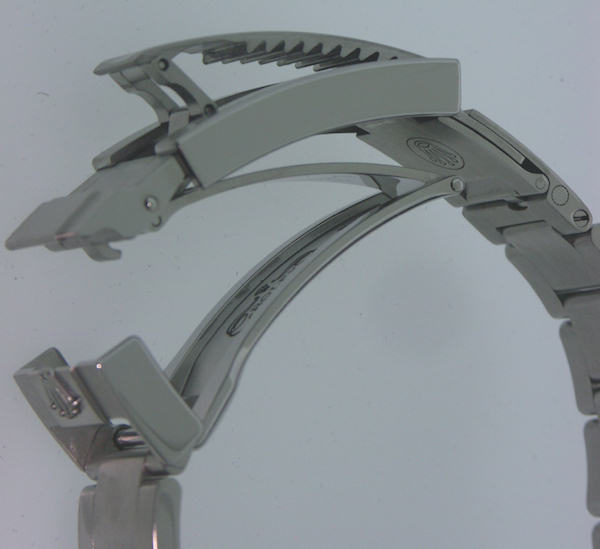
Det är inte alla som har det dock

Det är tyvärr bara dykarklockorna som har detta
** FLIPLOCK / OYSTERLOCK
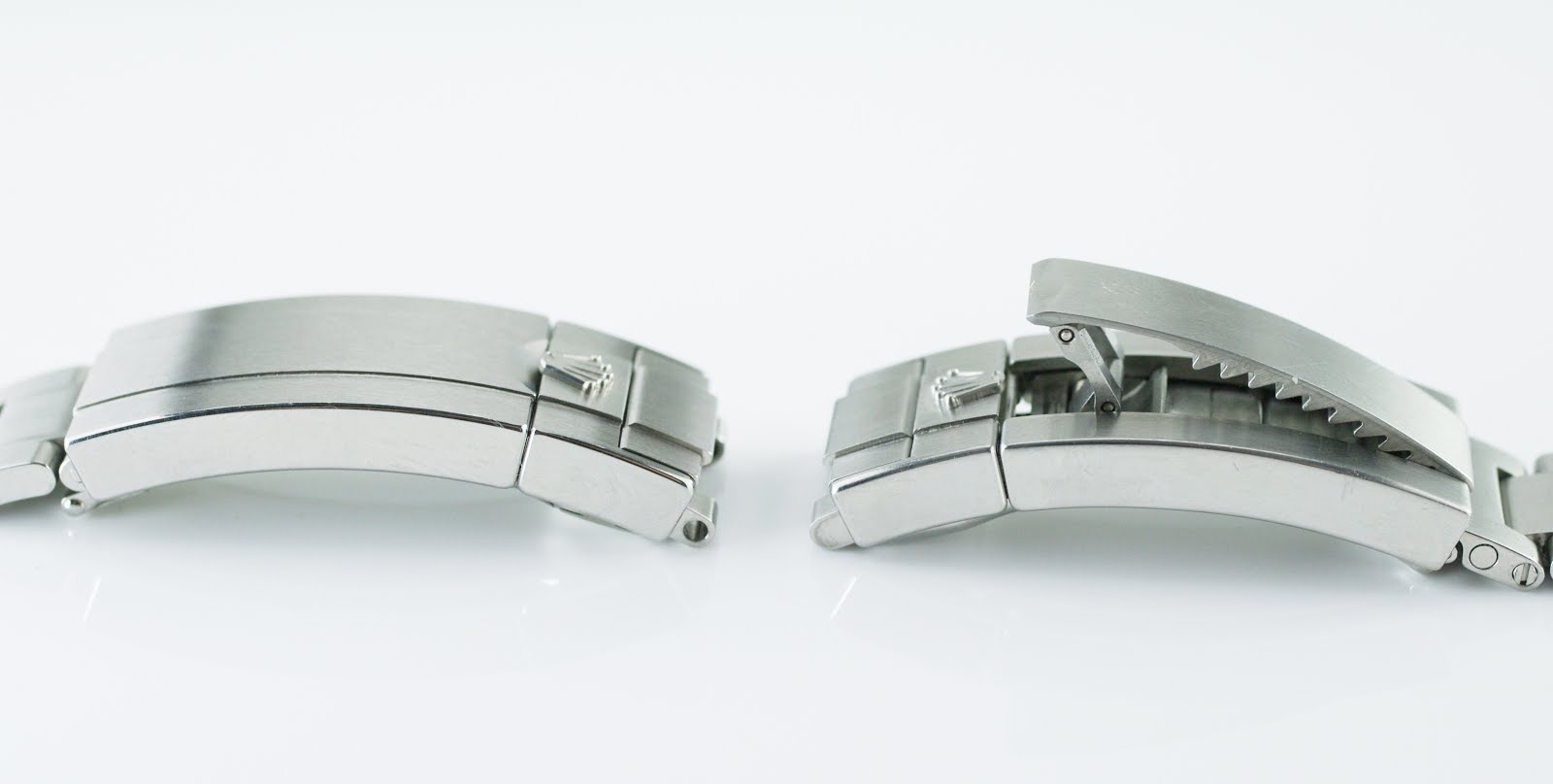
Fliplock är den klassiska varianten med ”viklås” som vi kallar det på svenska.
Där du oftast har den där lila extra biten att vika ut vid behov, men den biten förlänger alltså länken med en centimeter, om inte mer.
Så den har du ingen användning för till vardags.

** Oysterclasp
Det är standardlåset.
Ett helt enkelt viklås.

** CROWNCLASP
Det är den mycket stiligare varianten av lås, där själva låser ”gömmer sig” i länken.

Det ser vi på Jubilee och President länkarna.



** Rolesor/Two-Tone/ Guld på Stål
Det är när Rolex blandar guld och stål på samma klocka.

** Everose

Det är vad Rolex kallar sin egna blandning av Rose Gold/ Rose Guld/ Rött guld
Och det är mycket snyggt!
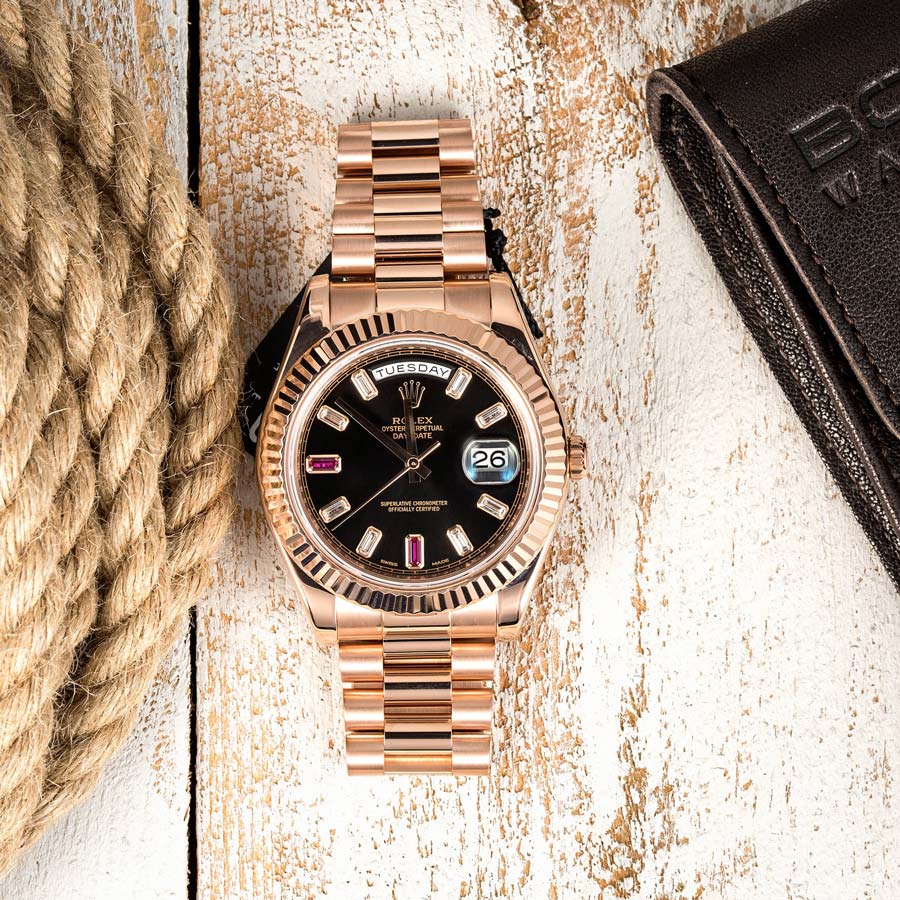
** Olika ”ringar” / kransar
Hmm…
Ja det räcker väl för dagens lektion..
Top Rolex Terms | How To Speak Rolex | Crown & Caliber
UPDATE
Klistrar in från Robb report
https://robbreport.com/style/watch-collector/rolex-terms-1234751700/
33 Rolex Terms Every Watch Collector Should Know, From Frog Foot to Bark Finish
Cyclops, Rainbow, Eagle Beak, and more, explained.
Essential Rolex Terminology
2-Line

A dial with only two lines of text above the 6 o’clock marker, such as certain Ref. 14060 Submariners without denoted Chronometer certification. Some prefer the uncluttered looks of these dials.
4-Line

A dial with four lines of text. On a Ref. 14060M Submariner, for example, this would add the chronometer certification to the model name and depth rating.
Bark Finish

A feature of certain President bracelets in which the gold material is etched to look like bark.
Big Crown

Certain early Submariners featured an oversized, 8mm winding crown—these include references 6200, 6538, and 5510.
Coronet

The Rolex crown logo
Cyclops

A watch crystal with a built-in magnifier for the date, first released in 1948 on a Datejust model and patented in 1952. Originally these were made of acrylic and were part of the crystal; later (and current) sapphire models feature a Cyclops manufactured separately and affixed to the main crystal.
Double Swiss Underline

A particular dial on the first Daytona Ref. 6239 that features an underline beneath the word “Cosmograph” and two “SWISS” signatures—one above the 6 o’clock marker, and one below the minute track, which is partially covered by the watch’s rehaut.
Eagle Beak

A crown guard style found on certain Ref. 5512 Submariners from the late 1950s/early 1960s in which the guards are shaped like eagles’ beaks. (As opposed to the square style that preceded them, or the pointed style that followed.)
Explorer Dial

A dial featuring the Explorer I’s distinctive mix of dash, Arabic and triangular markers. This dial appeared on certain earlier Submariners such as the Ref. 6200 and certain 5513s.
Feet First

A dial in which the depth rating begins with feet rather than meters, i.e. “660ft=220m.” This may indicate that the watch in question—generally a Sub—was destined for the American market, but this is collector guesswork.
Frog Foot

A particular type of Rolex coronet (crown) found on certain Rolex sport watches (reference 1016s, 1655s, etc.) made in the late 1960s through the mid-1970s, in which the coronet is wider and looks like the foot of…well….a frog.
Ghost Bezel

An aluminum bezel in which the coloring has faded—especially from black to blue or grayish.
Glossy Gilt Dial

A type of early Rolex dial in which the underlying brass dial blank is exposed, yielding text and other features (such as minute tracks, etc.) that looks golden in hue. These types of dials were eventually replaced by matte, and then by glossy dials with white printing and applied white gold surrounds.
HEV

The “helium escape valve,” which features on certain Rolex Professional models such as the Sea-Dweller. This one-way valve allows helium molecules to escape the watch during decompression, which prevents the crystal from flying off the watch. (Yes—this is an actual problem—if you’re a saturation diver.)
Jubilee

This bracelet type, launched by Rolex in 1945 to celebrate the 40th anniversary of the brand, is now an icon of watchmaking, freely imitated by other watchmakers both large and small. It still comes as standard fare on many Rolex models, perhaps most famously on the Datejust — the model on which it was launched. With its tapered, five-link design, it has a more sophisticated and dressy aspect than its cousin, the Oyster bracelet.
Matte Dial

A dial in use on Rolex sport watches (and others) from the mid-late 1960s through the mid-1980s. These did away with the “gilt” printing of the earlier gilt-gloss dials and instead featured a flat black surface with white text and painted tritium indices.
Maxi Dial

A dial that features oversized lume plots for increased legibility.
Mercedes Hands

This is a unique Rolex handset featured on many references whose minute hand has a round portion divided into three equally sized portions—much like the Mercedes logo. (The first Sub to feature this handset is the Ref. 6204 from 1954.)
Meters First

A dial in which the depth rating gives meters before feet, i.e. “200m=660ft.”
Neat Font

A dial style in which the printing is executed in a script that has been described as more standardized and “neater.” (Older Subs often feature printing that looks distinctly hand-drawn and messy.) Certain Ref. 5512 Subs feature such dials.
Nipple Dial

Certain vintage GMT-Master and Submariner models in yellow gold or two-tone feature black or blue dials in which the hour indices — also crafted from gold — protrude from the dial surface and are filled with luminous materials. No longer produced by the brand, the “nipple dial” can be found on references made from the mid-1950s through the mid-1980s. (Note that this dial type cannot be found on all-steel watches.)
Oyster

A highly water resistant case with a screw-down crown and screw-down caseback released in 1926 and featured on most Rolex watches ever since. (Currently, only the dressy Cellini doesn’t feature an Oyster case.)
Oyster (Bracelet)

Produced initially by specialist bracelet makers in the 1930s before seeing production move full in-house, the Oyster bracelet is another icon of Rolex design. With its three-link construction, the shape is both robust and elegant in its simplicity, and is commonly found on tool watches such as the Submariner and the Explorer. Due to its long presence in the Rolex catalog, myriad types of Oyster exist, with different collectors preferring different types.
PCG (Pointed Crown Guards)

A crown guard style in which the crown guards are pointed, as opposed to squared or “eagle’s beak” guards. These can be found on Ref. 5512 Subs from roughly 1959-1963.
Rainbow

Describes a watch in which the bezel is set with a multi-colored array of precious stones arranged in a rainbow pattern. Most often seen on the Cosmograph Daytona, “rainbow” watches (such as the Ref. 116599RBOW) have become increasingly popular with both women and men during the 2020s. (Certain Day-Date models have rainbow-colored hour indices rather than gem-set bezels, but generally aren’t referred to as “rainbow” watches.)
Small Crown

This term generally refers to early Subs that featured a smaller winding crown, such as the references 6204, 6205, 6536/1, and more.
Spider Dial

A type of glossy dial in which the lacquer coating has developed fine cracks, aka “crazing,” resulting in a spider web-like appearance. Though a definite defect, certain collectors are attracted to this look.
Stella Dial

A brightly colored, lacquered dial found on certain Day-Date watches from the 1970s and made for Rolex by a company called Stella. These were primarily meant for the Middle Eastern market.
Swiss Exclamation Point Dial

A dial in which a small, circular lume plot below the vertical, rectangular one at 6 o’clock forms what looks like an exclamation point, which is joined by a “SWISS” signature below the chapter ring. This dial featured on Subs, Explorers, and GMT-Masters in the late 1950s/early 1960s for a time.
Swiss Only

Rolex transitioned from tritium lume to LumiNova, a non-radioactive compound, in 1998 or thereabouts, at which point it began signing dials “SWISS.” In 1999, it upgraded from LumiNova to SuperLumiNova, and once again began signing dials “SWISS MADE.” Thus, the so-called “Swiss only” is a transitional—and relatively rare—dial that was only in production for roughly a year.
Super Case

Sometimes mistakenly called a “maxi case,” this describes a Submariner or GMT-Master II case with fatter lugs and a larger bezel, giving the impression of a larger watch even though certain Super cases measure 40mm in diameter like their predecessors.
Tapestry Dial

A dial that features vertical ridges. Sometimes found, for example, on 5-digit Datejusts from the late 1970s/early 1980s.
Tropical

A black dial that has turned brown due to degradation of the paint used, possibly due to UV exposure, humidity, moisture, etc. These dials are highly desirable if even in their coloration.

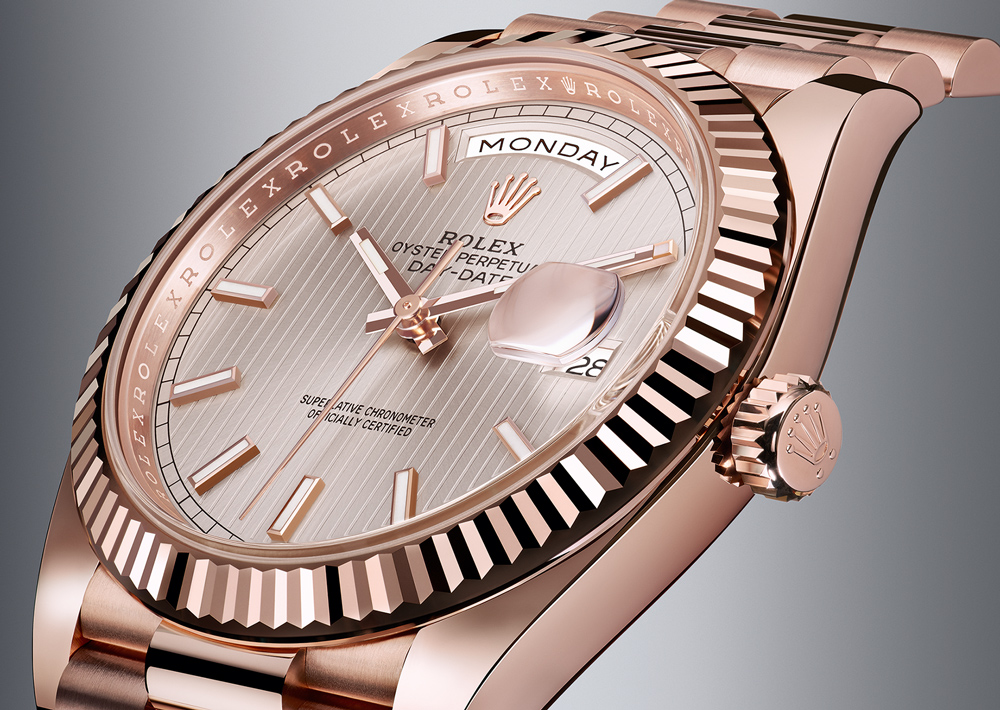
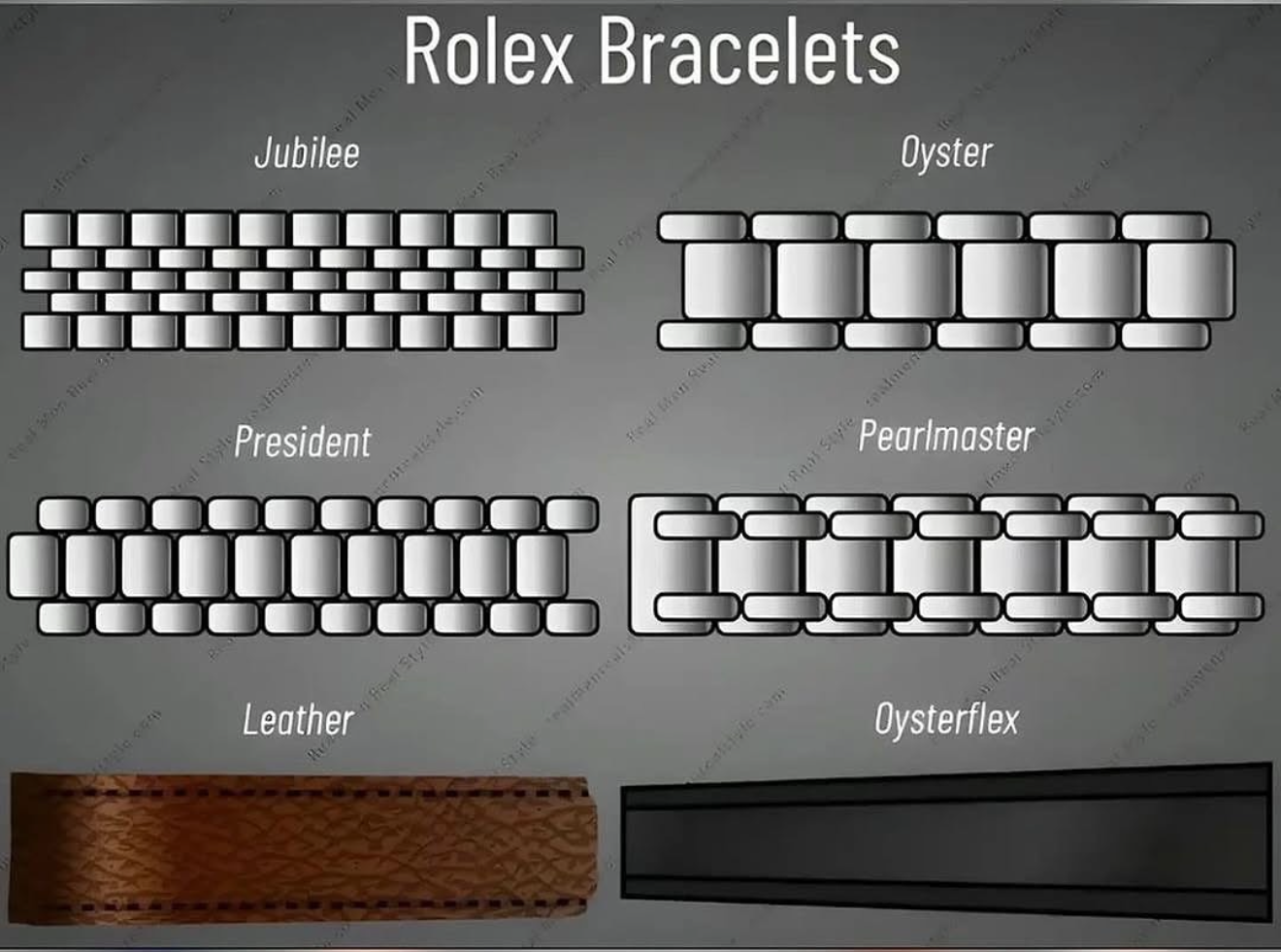
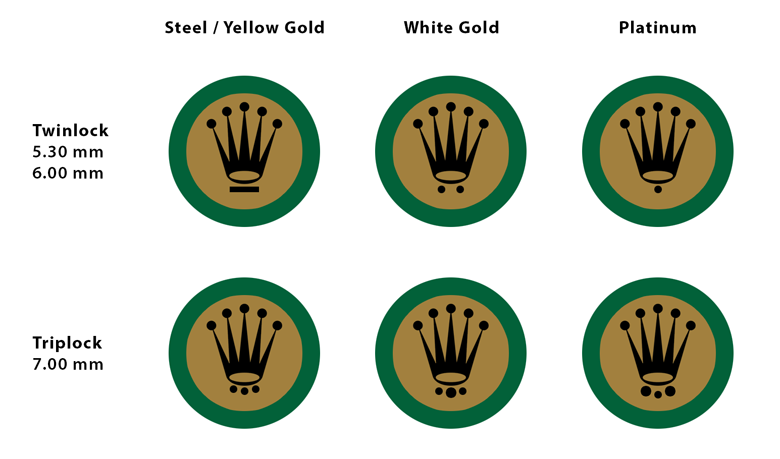
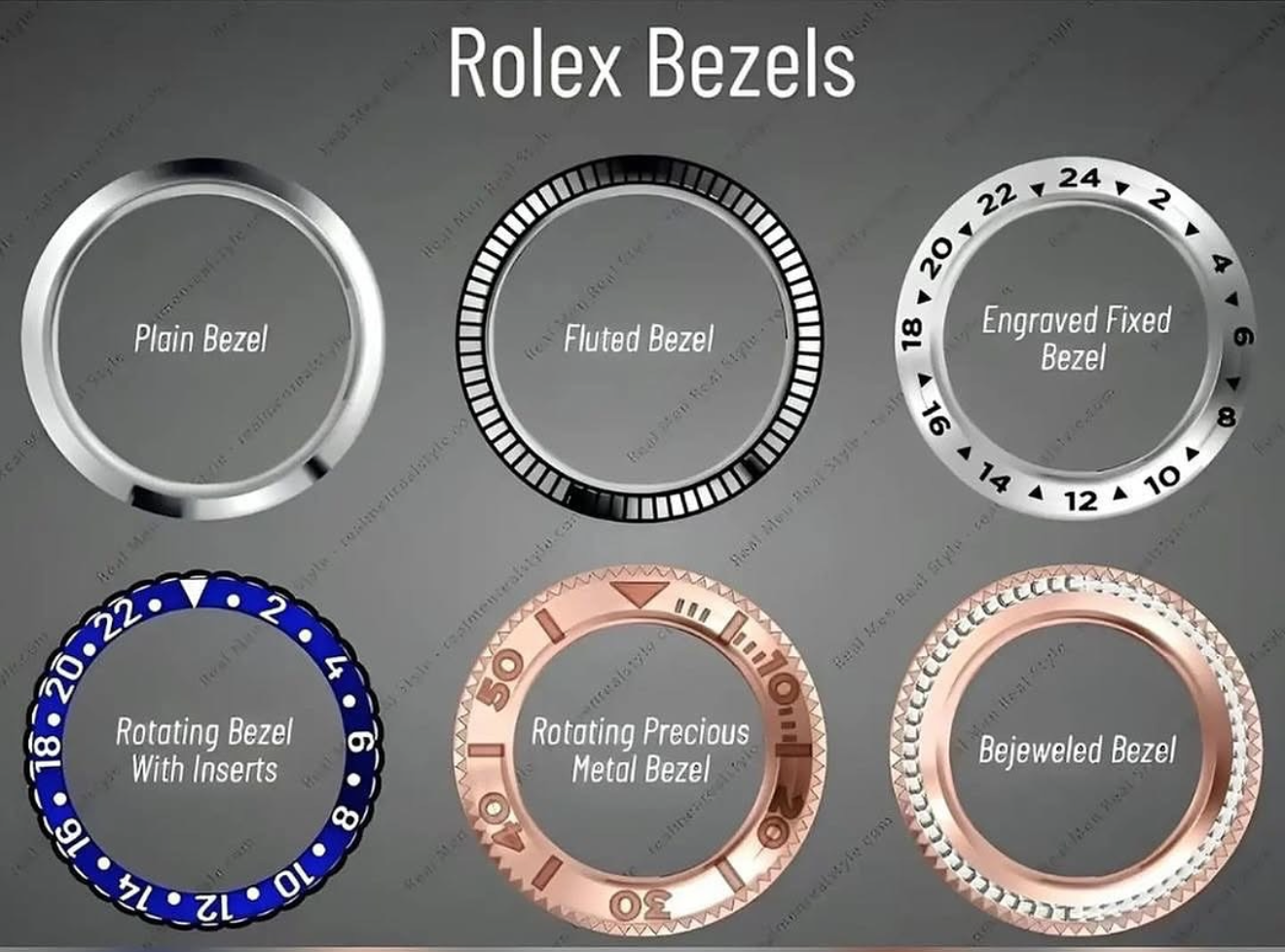


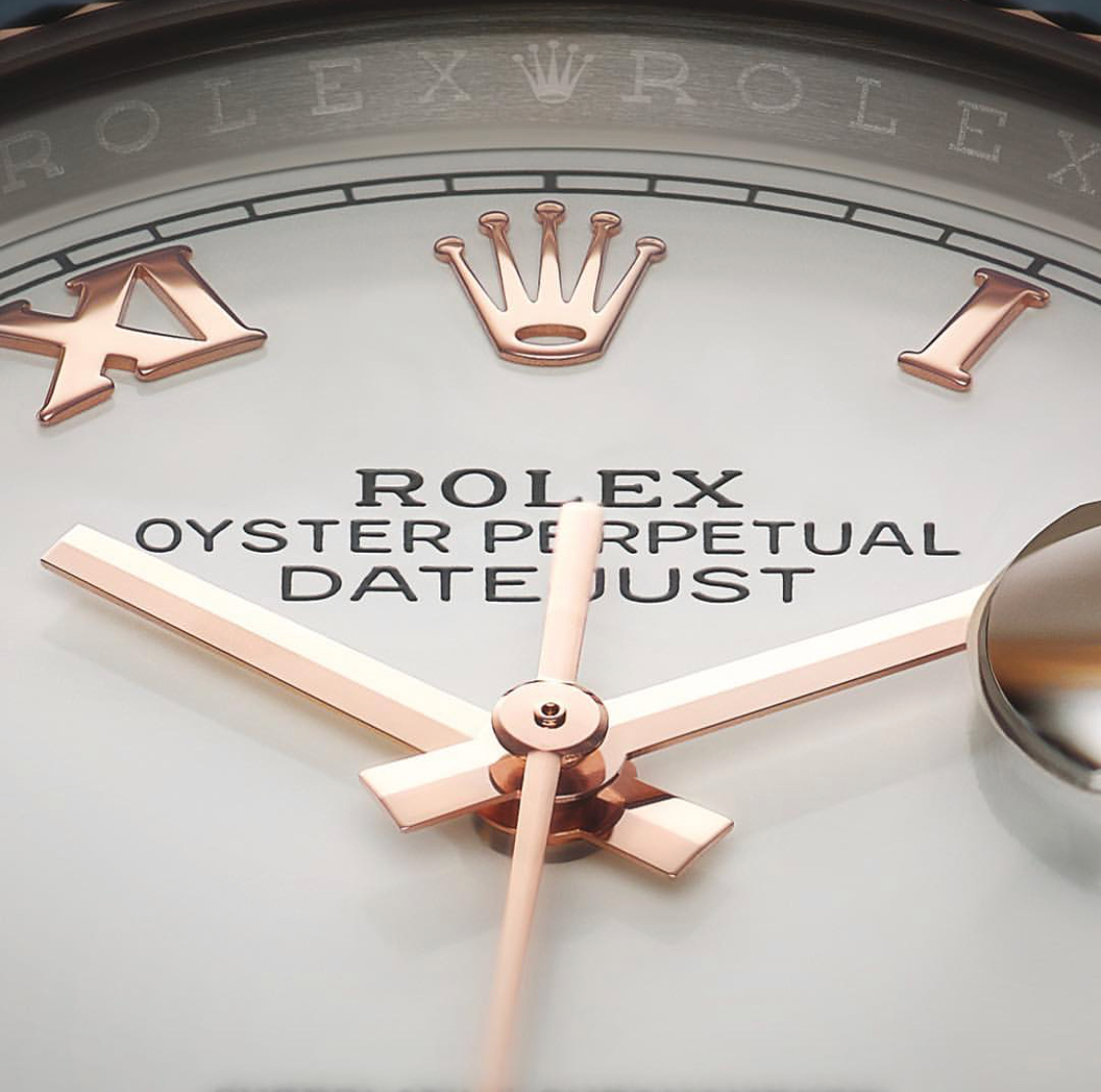
[…] Guide : Rolex Termer […]